9/11 REVERSAL: Prophetic Restoration of a Nation and the Glory of God
In 1994, as a prophetic warning to the nation some seven years before the 9/11 attacks, Dr. David Franklin wrote “A Call to Righteousness: Impending Judgment.” Drawing conclusions from Ezekiel’s chapter 12 desolation, destruction, dispersion, despair and prophetic hope in chapter 14, he warns that:
(1) When a nation persists in violence, the Sovereign Lord confronts and holds responsible
(2) When a nation forgets God, He allows for times of repentance
(3) If repentance is ignored, God will expose and execute judgment on an unfaithful nation.
The book continues with a call for international righteousness (p. 10) and a critique of the debt-free myth proclaiming a time of economic shift (p. 11-12). Remember, this warning was written two decades before anyone in America had mentioned foreclosure, crises or global economic crises. But my favorite chapter still is the interpretation of Ezekiel’s vision of the departure of the Glory of God (p. 20-21).
 I read this book back in 1999 and frankly had forgotten about it until 2011 when, at a young ministers training camp in the mountains of Bulgaria, we experienced what we consider the most genuine appearance of the Glory of God in our whole ministry. We wrote about it then and presented our observation at the 2012 Missions Conference at the Good Shepherd Church of God inPahokee,FL. The four points of our observation carry a tremendous prophetic resemblance to what Dr. David Franklin had proclaimed in his book 18 years ago:
I read this book back in 1999 and frankly had forgotten about it until 2011 when, at a young ministers training camp in the mountains of Bulgaria, we experienced what we consider the most genuine appearance of the Glory of God in our whole ministry. We wrote about it then and presented our observation at the 2012 Missions Conference at the Good Shepherd Church of God inPahokee,FL. The four points of our observation carry a tremendous prophetic resemblance to what Dr. David Franklin had proclaimed in his book 18 years ago:
(1) Every time God renews His covenant with His people, He shows His presence.
(2) We know that God is present in the covenant, because He shows His glory. It happened to Moses and his generation. And it also happened to Solomon several hundred years later.
(3) When a generation looses the vision of the Glory of God, God begins renewing His covenant again with a new generation.
(4) God is not satisfied with a people who know the signs and the blessings of the covenant. He rests not until He is revealed as the God of the covenant.
First Day of School in Bulgaria
Never Forget
Celebrating 35 Years in Global Ministry
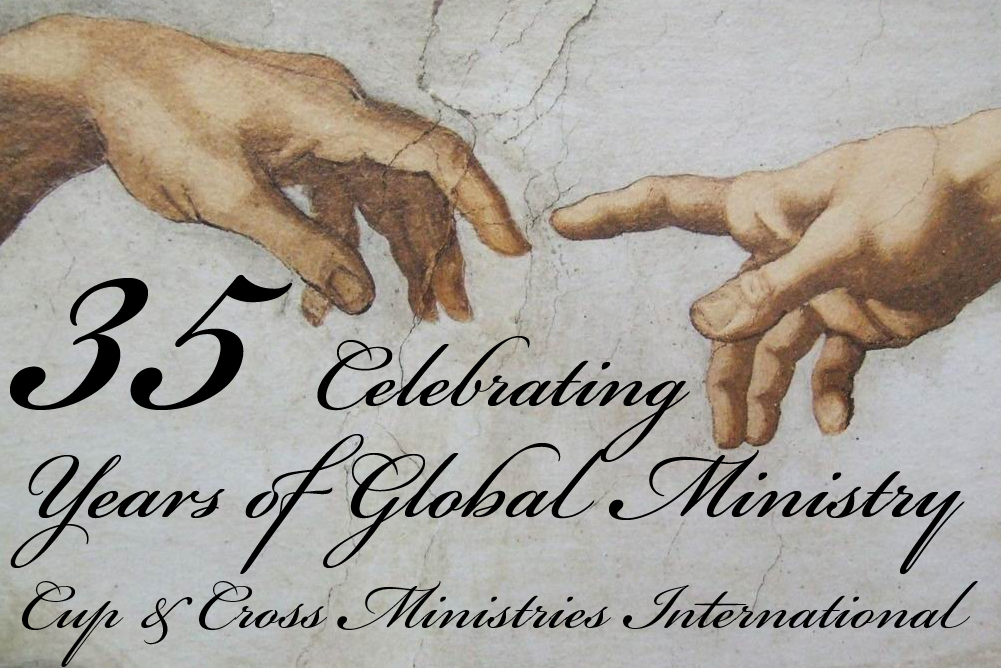
Russia’s Prophetic Imperial Road to Israel
August 30, 2025 by Cup&Cross
Filed under Featured, Missions, News, Publication
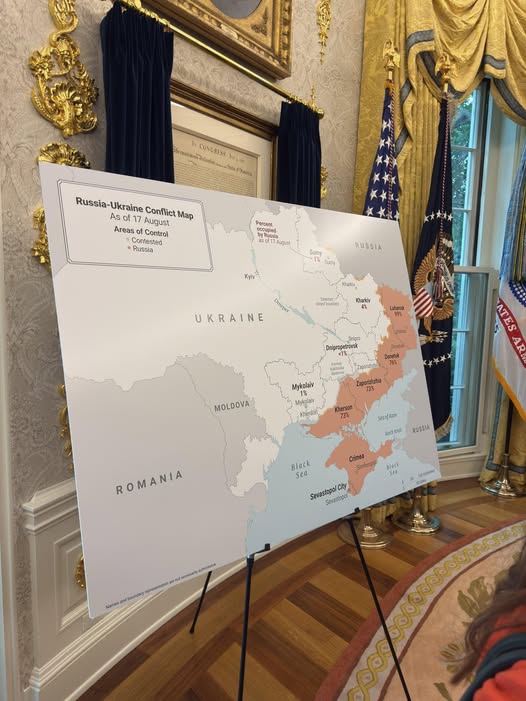
Ukraine is the hinge between Russia’s Eurasian interior and its southern theaters— the Black Sea, the Turkish Straits, the Eastern Mediterranean, and the Levant/Israel. Since 2022, battlefield developments in the Black Sea (attrition of the Black Sea Fleet, restrictions under the Montreux regime, and the end of the grain initiative) have reshaped Russia’s access and force projection toward the Middle East, where Moscow relies on long-term basing in Syria (Tartus/Khmeimim). In eschatological discourse, readings of Ezekiel 38–39, Daniel 11, and Revelation 20 often envision a “northern” vector toward Israel; while controlling Ukraine facilitates the logistical corridors by which a northern power could move toward the Levant.
1) Historical Perspective: the “imperial corridor” to the south
From Tsarist times through the USSR to the present, the drive to “warm waters” has been durable. Black Sea access and the Bosporus/Dardanelles are prerequisites for reaching the Mediterranean and, ultimately, the Levant/Israel. Ukraine, as a Black Sea state, constitutes the intermediate step between Russian continental depth and southern power projection. Biblical refs: Ezek 38:6, 15; Dan 11:40–45; Isa 41:2.
2) Geopolitics: the Black Sea and the Straits
In February 2022, Turkey invoked the Montreux Convention and closed the Straits to belligerents’ warships, constraining Russian naval rotations between the Med and the Black Sea and hampering amphibious options. Concurrently, Ukraine’s strikes—the sinking of the flagship Moskva (Apr 14, 2022), the Sevastopol dry-dock strike (Sept 2023), and repeated attacks on the Kerch Bridge (2022; 2023)—forced Russia to redistribute vessels away from Sevastopol and operate farther east/under greater risk, reducing freedom of action in the western Black Sea and approaches to the Mediterranean. The termination of the Black Sea grain deal (July 2023) further altered maritime risk and logistics.
3) Military-Strategic Logic: from the Ukrainian front to the Levant
Despite constraints at sea, Russia retains a strategic foothold in Syria through a 49-year lease at Tartus and a standing agreement for the Khmeimim air group—legal architecture for long-term Eastern Mediterranean presence and potential leverage vis-à-vis Israel. The Ukrainian theater is linked to this southern theater via maritime access (Black Sea/Straits) and via technology transfer (UAVs, air defense, long-range strike). Since 2022, Russia has localized production of Iranian-designed Shahed/Geran UAVs (Alabuga, Tatarstan), supporting a protracted war effort and shaping capabilities that could be repurposed across theaters, including the Levant. Whatever frictions may exist, the drone co-production pattern—financing, localization, scale—is well documented.
4) Biblical Perspective: Ezekiel, Daniel, Revelation
- Ezek 38–39 (Gog of Magog): a coalition “from the far north” advancing against Israel “in peace.” Contemporary application is not a one-to-one mapping to Ukraine; rather, it highlights northern approach vectors whose geography aligns with Black Sea–Anatolian–Levantine corridors.
- Dan 11:40–45: movements of a “king of the North” toward the “Beautiful Land” are often read typologically, consistent with north-to-south operational axes.
- Rev 20:7–9 (Gog and Magog): eschatological gathering of nations; not an identification of specific modern states, but a framework for northern-southern mobilizations.
5) Prophetic Scenarios and the “Last Days”
In prophetic discourse, “wars and rumors of wars” (Matt 24) function as general markers, not as a GPS of events. Ukraine is not named in Scripture, yet control over Ukraine affects Russia’s capacity to mass naval/air/cyber power toward Israel via the Black Sea and the Straits—especially if shore-based leverage persists at Tartus/Khmeimim. NATO’s enlargement with Finland (2023) and Sweden (2024) reshapes the northern balance, indirectly constraining Russian bandwidth for southern adventures.
Conclusion
Ukraine is a geostrategic key to Russia’s southern theaters. Post-2022 constraints in the Black Sea/Straits and attrition of the Black Sea Fleet have complicated Moscow’s ability to project power toward the Levant—unless offset by Syrian basing and asymmetric systems (UAVs, missiles). Eschatologically, this does not “prove” a direct fulfillment of Ezekiel 38–39; it delineates plausible corridors by which a northern power might act against Israel.
Russia’s imperial dream for access to Israel/Mediterranean
August 25, 2025 by Cup&Cross
Filed under Events, Featured, News, Publication
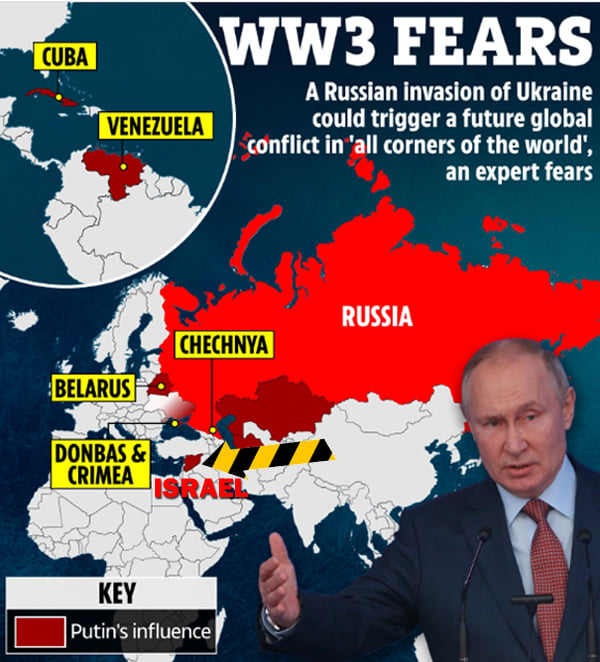
While doing research couple of years ago for an article on Ezek. 37-38 and Russia’s imperial dream to gain access to Israel and the Mediterranean, AI informed me that there is absolutely no official political news or analytics source that confirms such hypotheses.
Back then, I insisted on proceeding with the article regardless of this informed artificial and intelligent opinion and proceeded with completing the article called: Using Crimea and Splitting Turkey in Russia’s Strategy Against Israel.
PROPHETIC INSIGHT: The first picture with Putin is Ezekiel’s prophecy projecting Gog and Magog crossing into Israel. The other one is from Trump/Zelenskyy’s meeting last week, after no deal was reached with Putin in Alaska.
READ ALSO:
- Russia’s Prophetic Imperial Road to Israel
- Using Crimea and Splitting Turkey in Russia’s Strategy Against Israel
- RUSSIA/UKRAINE WAR: ENTER the BIRTH PANGS
- Bulgaria in the Tension between NATO, Ukraine and Russia
The Forgotten Etowah Revival
By 1907 Church of God overseer AJ Tomlinson was well aware of the Etowah outpowering going on in parallel with the Azusa Revival. He also used the Etowah L&N many times during his travels. But chose Cleveland (on the famous Copper Road route), because Cleveland had not seen revival just yet. And this was about to change soon…
Bradley County, Cleveland, Tennessee was the western terminus of the Copper Road where copper ore from Ducktown and Copperhill was brought by wagons to the East Tennessee & Georgia RR. It was completed to Cleveland from Dalton, Georgia in 1851. In 1905 the Southern Railway hired New York architect Don Barber to design what became known as “Terminal Station” of the Chattanooga Choo-Choo, which in parallel to the Etowah L&N Depot began construction in 1907 and opened in 1909. So, no, the choice Tomlinson made was not obvious at all, neither it was based on the train line per se. He did not want to compete with the Etowah and Chattanooga revivals, and settled for Cleveland instead…
 The Forgotten Etowah Revival
The Forgotten Etowah Revival
It started with the Old-Line Railroad quickly built in 1890 as part of a project to link Knoxville, TN to Marietta, GA by rail. Just a few short years afterwards, a distinctive feature was built as part of the line, the Hiwassee Loop, a circle of track that was built around Bald Mountain. The story told that when the workers came down from the mountain to build the L&N line and depot to connect the Hiwassee River Rail Loop, there wasn’t much to do except work. On the weekend, many of them flooded the old Methodist church across from today’s Etowah‘s chamber of commerce, mainly to look for women (as old timers plainly put it). А holiness preacher was carrying on a revival there, many were convicted under the power of the Holy Spirit and got saved.
Those were the years of ongoing holiness revivals across Appalachia. Out West, the Pentecostal revival at Azusa was already brewing. Much like the rest of the holiness outpourings, the Etowah revival swept through the area. Not just workers, but the local population was touched as well. The upper room at “Blue Front” built by J.C. Williams built in 1906, where revival meetings were held, became the starting point of at least five local congregations.
At the same time, the Church of God movement was gaining speed on the other side of the mountain. Murphy, Tellico Plains and Reliance all became sites of the first holiness Spirit outpourings. In just a short amount of time, the Church of God grew and moved down the trainline to Cleveland, TN. Interestingly enough, most of the trainline was built along old confederate routes, which followed the Trail of Tears.

The Tellico Blockhouse was the starting point for the Old Federal Road, which connected Knoxville to Cherokee settlements in Georgia. The route ran from Niles Ferry on the Little Tennessee River near the present-day U.S. Highway 411 Bridge, southward into Georgia. Starting from the Niles Ferry Crossing of the Little Tennessee River, near the U.S. Highway 411 bridge, the road went straight to a point about two miles east of the present town of Madisonville, Tennessee. This location is 20 some miles north of the Tellico Plains area that marks the site of the beginning of the Church of God (Cleveland, Tennessee). The road continued southward via the Federal Trail connecting to the North Old Tellico Highway past the present site of Coltharp School, intersected Tennessee Highway 68 for a short distance and passed the site of the Nonaberg Church. East of Englewood, Tennessee it continued on the east side of McMinn Central High School and crossed Highway 411 near the railroad overpass. Along the west side of Etowah, the road continued near Cog Hill and the Hiwassee River near the mouth of Conasauga Creek where there was a ferry near the site of the John Hildebrand Mill. From the ferry on the Hiwassee River the road ran through the site of the present Benton, Tennessee courthouse. It continued on Welcome Valley Road and then crossed the Ocoee River at the Hildebrand Landing. From this point the road ran south and crossed U.S. Highway 64 where once stood the River Hills Church of God (Ocoee Church of God).
Revival Continues
In 2023, over a dozen of churches from the greater Conasauga, Reliance, Ocoee, Old Fort, Benton, and Delano communities along with the two oldest Polk County congregations at Cookson Creek and Friendship Baptist, joined piece by piece the original revival vision God has given to many ministers for this area of East Tennessee. While a few saw it as a spiritual connection with the brief spark of the Lee University student revival earlier in the year, most were convinced it was the restoration movement of the original Appalachian/Cherokee holiness outpouring, which took place among L&N Depot and Hiwassee River Rail Loop workers in the old Methodist church at the “Blue Front” across from Etowah‘s chamber of commerce. In 2023, the Polk Co. Revival began in September and carried on well through the fall until Thanksgiving. This year, even more churches in the area are praying again for a fresh outpouring of the Spirit expecting another revival to sweep the hearts of many in the area where no more than a century ago, the Early Revival Rain fell in abundance.
TRUTHS from AZUSA STREET REVIVAL by Frank Bartleman
“A revival almost always begins among the laity. The ecclesiastical leaders seldom welcome reformation.”
One reason for the depth of the work at “Azusa” was the fact that
the workers were not novices. They were largely called and prepared
for years, from the Holiness ranks, and from the mission field, etc.
They had been burnt out, tried and proven. They were largely
seasoned veterans. They had walked with God and learned deeply
of His Spirit. These were pioneers, “shock troops,” the Gideon´s
three hundred, to spread the fire around the world. Just as the
disciples had been prepared by Jesus.
We have now taken on a “mixed multitude.” And the seeds of
apostacy have had time to work. “First love” has been also
largely lost. The dog has “returned to his vomit” in many cases,
to Babylonic doctrines and practices. An enfeebled mother can
hardly be expected to bring forth healthy children.
The very truths that gave birth to the Pentecostal movement are
today generally rejected as too strong.
A revival almost always begins among the laity. The ecclesiastical
leaders seldom welcome reformation. History repeats itself. The
present leaders are too comfortably situated as a rule to desire
innovation that might require sacrifice on their part. And God’s
fire only falls on sacrifice. An empty altar receives no fire!
God has always sought a humble people. He can use no other…
There is always much need of heart preperation, in humility and
separation, before God can consistently come. The depth of
any revival will be determined exactly by the spirit of repentance
that is obtained. In fact, this is key to every true revival born of God.
Men’s hearts are being searched…it is a tremendous sifting time,
not only of actions but of inner motives. Nothing can escape the
all-searching eye of God.
Bibliata.TV Reaches 75,000 Mark
 Bibliata.TV is one of our ministry websites for Christian videos targeting Bulgarian speaking people. The site gives opportunity for churches, ministers and individual believers to publish their Christian videos of worship, preaching, evangelizing, prayer, drama, movies and much more. On September 15, 2008 our team pre-released the website in beta testing version and it was officially launched in November 2008 after rebuilding the site due to government interference. Now after successfully relocating our servers to a secure hosing under a new contract and overcoming many trials, today one year latter on October 26, 2009 we reached having 5000 Christian videos with over 800 users.
Bibliata.TV is one of our ministry websites for Christian videos targeting Bulgarian speaking people. The site gives opportunity for churches, ministers and individual believers to publish their Christian videos of worship, preaching, evangelizing, prayer, drama, movies and much more. On September 15, 2008 our team pre-released the website in beta testing version and it was officially launched in November 2008 after rebuilding the site due to government interference. Now after successfully relocating our servers to a secure hosing under a new contract and overcoming many trials, today one year latter on October 26, 2009 we reached having 5000 Christian videos with over 800 users.
We send this to you as a praise report of having a culture changing Christian presences on the World Wide Web. When media is filled with pornography, indecent suggestive thoughts, violence and sheer ungodliness, Bibliata.TV provides a ChristSpace in which the name of the Lord can be broadcasted worldwide. It allows for the Bulgarian culture to express their religious beliefs and no longer be a slave to the communist oppressive mentality. Believers are free to share a new reality to a new generation.
Nearly every month we are encouraged by the testimonies of Bibliata.TV. Here are some of them:
- An elderly lady whom has difficulty leaving the home was instantly healed after watching a healing service on the site.
- A gentleman from the ghettos of Sofia heard the praise and worship videos of a local church and after contacting the pastor and attending his church he was saved. Now his whole family faithfully attends this church.
- A lady from a small village with no church watched the regularly uploaded services of a pastor and called the next day to receive the Lord as Christ and Savior.
- A Bulgarian business man has offered to partner with us to absorb some of the cost of the hosting of the site.
Due to this overwhelming success and popularity of the site, we have had to rethink our hosting strategy and Lord willing in the next few months we will negotiate a contract with a new firm to provide us with greater bandwidth so that even more users will be able to upload their videos to the site and be able to share in the ministry of others who have uploaded to the site. We are also in the process of releasing a similar website for English speaking believers, which we are calling WorldMissions.TV.
As Pentecostals historically…
As Pentecostals historically (and as a movement)
We have been looking for power when we should have been seeking after His presence
We have been looking for gifts and signs and wonders, when we should have been looking for fruits of the Spirit and of character
We have been looking for preachers and prophets to follow, when we should have been looking for God’s presence to abide in
We have been looking for prophetic words and utterance, when we should have been taking more time in personal prayer
We have been growing, when we should have been going
And going when we should have been learning in the Spirit
We have been looking for more ways to build, when we should have been looking for more ways to move and go
We have been looking for ways to influence the world, instead of looking to be uninfluenced by God
And in our desire to be leaders and influencers, we have forgotten how to be led by God
And for a long time as a movement, we have existed at the borderline, at the verge and at the danger of gaining our rightful place in human history, but loosing our royal position in the GLORY of GOD
BUT ONE THING WE DID GET RIGHT: The Baptism with the Holy Ghost (watch the full message)
Read also: Last Days Great REVIVAL
20 recent Pentecostal articles in light of the upcoming Pentecostal Sunday celebration:
- The Forgotten Azusa Street Mission: The Place where the First Pentecostals Met
- Diamonds in the Rough-N-Ready Pentecostal Series (Complete)
- 95th anniversary of the Pentecostal movement in Bulgaria
- Toward a Pentecostal Solution to the Refugee Crises in the European Union
- Historical and Doctrinal Formation of Holiness Teachings and Praxis among Bulgarian Pentecostals
- Pacifism as a Social Stand for Holiness among Early Bulgarian Pentecostals
- The Practice of Corporate Holiness within the Communion Service of Bulgarian Pentecostals
- Sanctification and Personal Holiness among Early Bulgarian Pentecostals
- First Pentecostal Missionaries to Bulgaria (1920)
- Historical and Doctrinal Formation of Holiness Teachings and Praxis among Bulgarian Pentecostals
- The Everlasting Gospel: The Significance of Eschatology in the Development of Pentecostal Thought
- Online Pentecostal Academic Journals
- What made us Pentecostal?
- Pentecostalism and Post-Modern Social Transformation
- Obama, Marxism and Pentecostal Identity
- Why I Decided to Publish Pentecostal Primitivism?
- Historic Pentecostal Revival Tour in Bulgaria Continues
- The Land of Pentecostals
- Pentecostal Theological Seminary Address
- A Truly Pentecostal Water Baptism


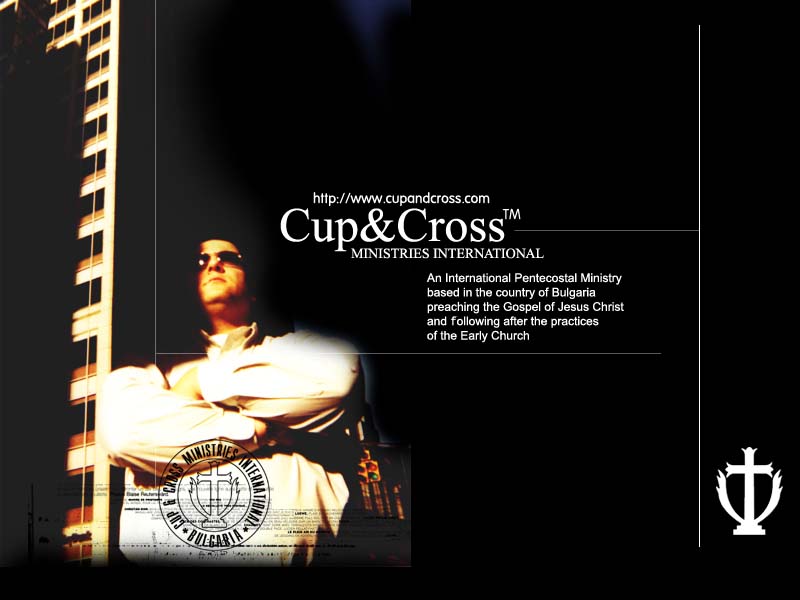



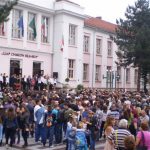









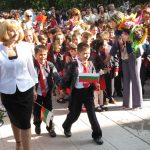

![51DUWeyraBL._SY344_PJlook-inside-v2,TopRight,1,0_SH20_BO1,204,203,200_[1]](https://cupandcross.com/wp-content/uploads/2014/04/51DUWeyraBL._SY344_PJlook-inside-v2TopRight10_SH20_BO1204203200_1.jpg)






